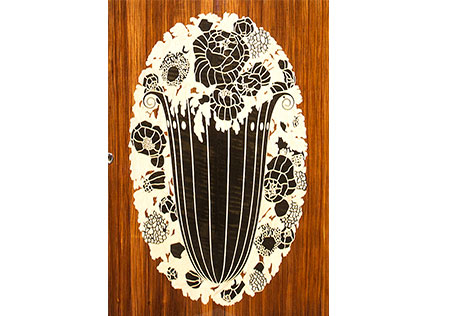Marquetry is the way and means
of putting a skin on a surface.

This decoration is made with veneers shaped following a model or a drawing.
Once the marquetry is made, it can be pasted on all sorts of mediums : furniture, case, woodwork or panel. The result can be abstract or figurative patterns. By arranging the marquetry only with the wood grain (wood natural sense), the inlayer can create geometric forms. This technique is called frisage in french.
Marquetry and its history
In antiquity, marquetry decorations are inlays. This technique involves curving cavities in wood pieces to set in other wood essences or various materials like bone, ivory, horn, stone, etc, in order to play on contrasted colors.
In the 14th century, the technique was rediscovered by the Italians and used on furniture or walls. Marquetry reached its peak in the 17thand 18th centuries before before declining until the end of the 19thcenturie, it returned through decorative arts which gave it an important place right in the time of Art Nouveau and Art Déco.
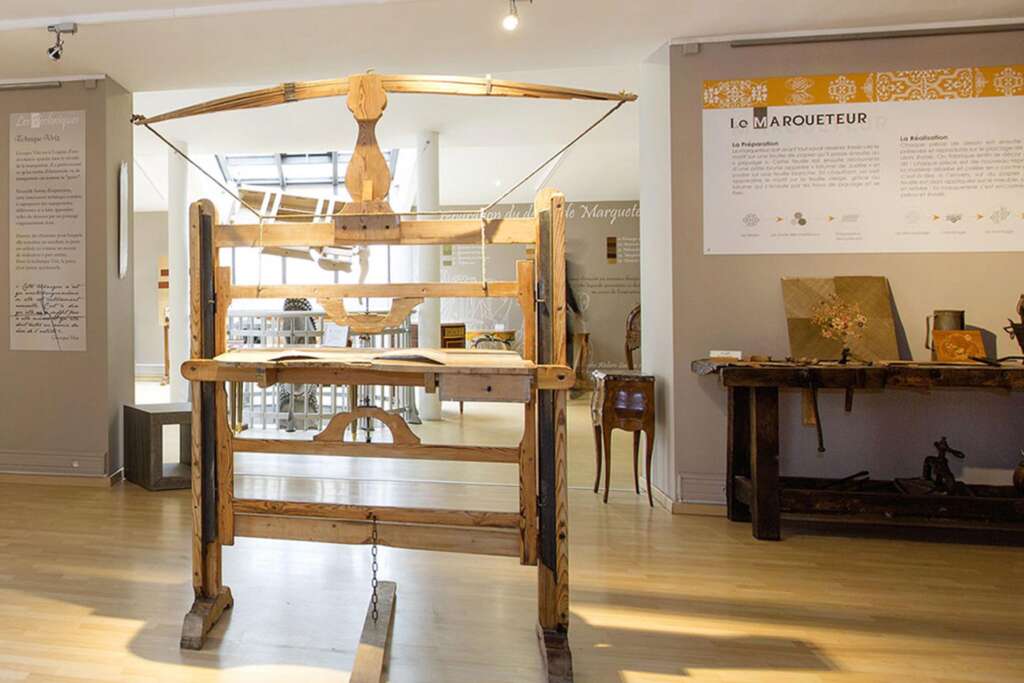
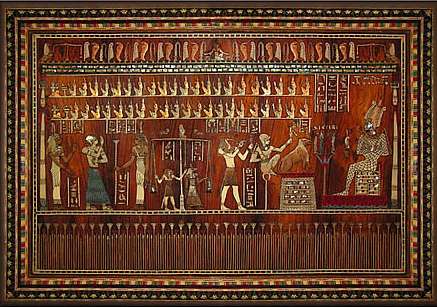
The antiduity and Middle Ages
The first traces of marquetry were found in Anatolia. The Egyptians also mastered this technique that was used by inlaying ivory or precious stones in their pieces of furniture.
This decorative art has been spreading all over the ancient world before declining with the Roman Empire fall. In the Middle Ages, Venice and Byzantium were the major production centres. They crafted luxurious objects made by inlaying bone, ivory or mother-of-pearl in wood then exported in the Occident.
The Renaissance
Italy is the cradle of decorative arts. Art schools started to flourish in Venice, Siena and Florence
and the marquetry began to stand out. The Florentines were the first to start cutting out thin sheets of wood with bocfils (small saw) developing a method to cover pieces of furniture. Marquetry arrived in France through François Ier’s taste for arts.. His reign has been furthering the rising of Arts and Letters along with crafts and techniques necessary to their making.
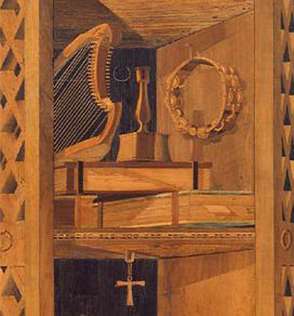
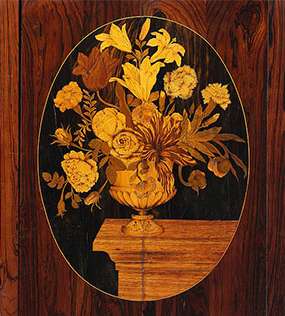
The 17th century
Marquetry found a new rise in the Netherlands which influenced the French style. Thanks to the numerous craft skills in the French kingdom, Colbert (Louis XIV finance minister) gathered in the Gobelins many inlayers, among who were Jacques Sommer and the Dutch Pierre Golle.
They both reused an italian technique, the Tarsia incastro. André Charles Boulle brought it up to date by using materials such as mother-of-pearl, tortoiseshell, copper or tin.
From the 18th to nowadays
At the beginning of the 18th century the lacquer and the varnishes appeared opening new horizons regarding the ways of decorating. Inlayers such as Charles Cressent, Jean-François OEben or Jean-Henri Riesener have been giving an international reputation to the French marquetry. Thanks to extended commercial exchanges, new exotic wood essences entered the arrangements. In the 19th century, if marquetry didn’t disappear, it has been losing importance.
At the turn of the 20th century, nature has been inspiring creators from the School of Nancy such as Emile Gallé and Louis Maorelle who tried hard to represent the flora. These patterns stylized in a very rigorous manner around the 20’s and the 30’s with the work of Jacques-Emile Ruhimann who was one of the ambassadors of the Art Déco style. Since that time, marquetry has been innovating with technical improvements like the Georges Vriz crafting style of the use of laser cutting machines.
